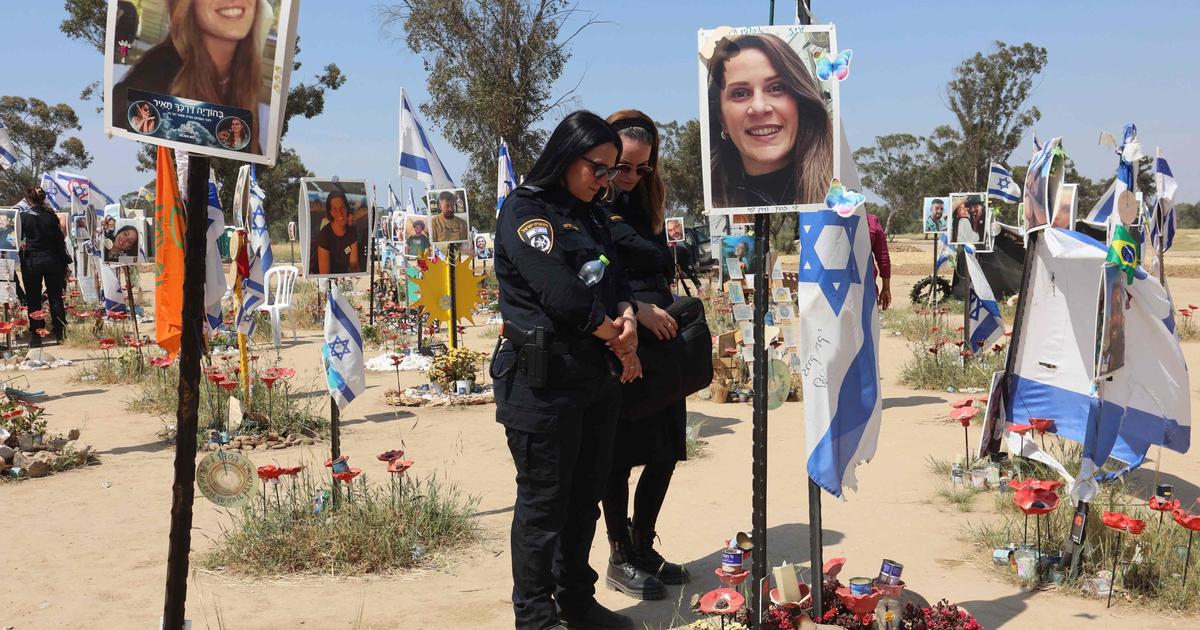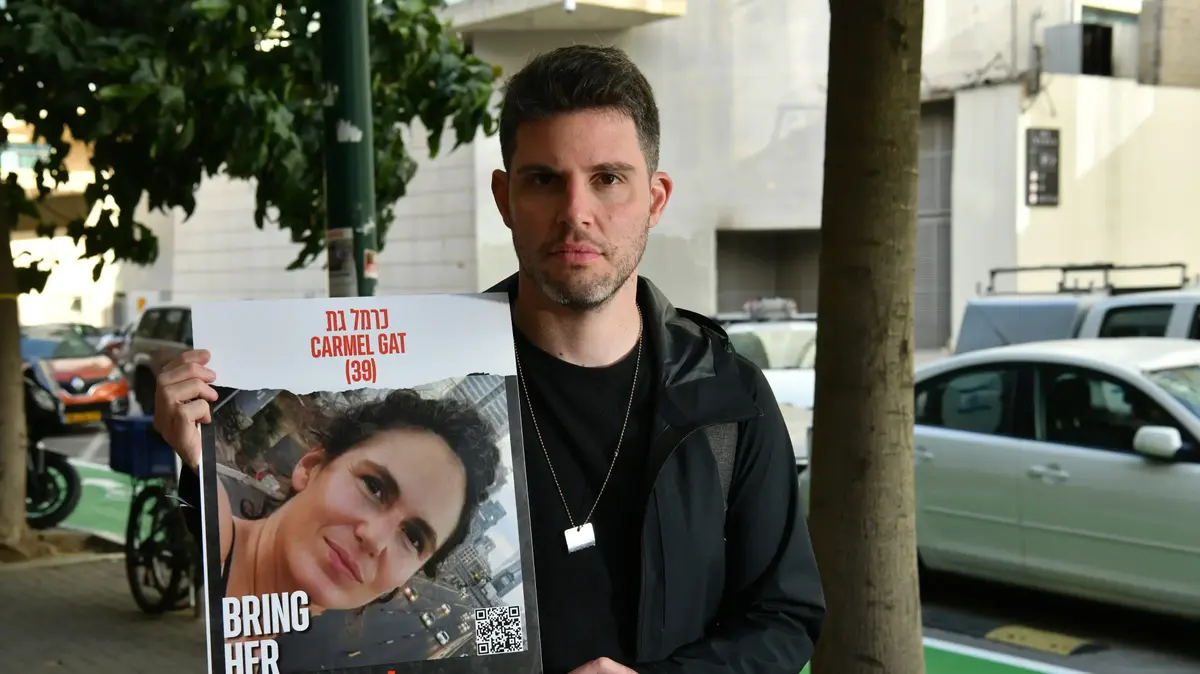A displaced woman carries her child in a neighborhood of houses on stilts, in Tumaco, on June 15, 2010. Jan Sochor (LatinContent via Getty Images)
The first time Yadira saw a gun, she saw it up close and pointed it straight at her.
“Take off your clothes,” the paramilitary commander yelled at him as he held the revolver.
“I fearfully told him no, but he pointed to the gun.
No protection was put on, nothing was put on.
It was my first time with a man.”
It was also the last.
“I never told anyone, absolutely no one.
Never, out of fear.
For me it was like a stain, an offense, a shame that people knew.
So I kept that to myself.
Even since then, I never had a boyfriend.
I never had anything else."
He was 16 years old and it happened in 1996, when the AUC (United Self-Defense Forces of Colombia) were already the law in Sucre.
Yadira lived there, and after more than 20 years she has narrated her story to the Truth Commission in the chapter
My body is the truth
, which gives a voice to women who suffered the worst of a war between men. .
10,864 were heard and her stories show how their bodies were used as another weapon in the conflict.
The women suffered harassment, persecution, the dispossession of their lands.
Many were separated from their children and above all, they were the main victims of sexual and reproductive violence in the midst of the war.
His victimizers were all.
The guerrillas, the paramilitaries, the public force.
The Single Registry of Victims says that in Colombia there are at least 32,446 people who suffered sexual violence during the conflict.
Women and girls represent 92.5%.
The Truth Commission heard 1,294 stories about this type of crime, 89.51% of which came from the mouth of a woman.
They were the ones who suffered the worst from the violence of weapons and the ones who have seen the least justice.
The Commission recognizes that this section of the voluminous final report has been one of the most difficult to produce because it still, in many cases,
A displaced woman enters her wooden house near Tumaco, Nariño, on June 15, 2010. Jan Sochor (LatinContent via Getty Images)
Sexual and reproductive violence worsened in the midst of the war.
Torture during pregnancy, imposed abortions and forced pregnancies, as a result of rape, among others, were some of the forms of violence revealed in the document.
The testimonials take your breath away.
Rarely has the country heard what women in war experienced from their own voice.
The paramilitaries raped Sandra and, when her husband wanted to defend her, they left her a widow.
“I suffered a lot when those people arrived.
They grabbed me, tied me up, raped me, put a stocking in my mouth.
I grabbed them in fists.
Then they took out a knife and I thought they were going to cut the back of my neck, but they stabbed me in the back.
That was the sign for my whole life.
About four or five days later they killed my husband, because he confronted them.
They took out a knife and cut the back of his neck.
I was at home, washing clothes.
He had little children.
They told me I was a guerrilla and they insulted me.”
Sandra was not a guerrilla, she was a peasant from Yarumal, Antioquia.
Most of the testimonies are from women in rural areas.
There, where the state presence is made up of the military, war crimes and crimes against humanity have occurred against girls and young women.
All the armed groups were responsible, but not all did it in the same way.
In the combats between them they agreed in the way they acted, but in front of the women they worried about making differences with the other armed actors.
The cruelty of the paramilitaries is told in dozens of testimonies.
They were cruel and ruthless.
Jacobo, a former member of the AUC Centauros Bloc, gave an account of the degradation that was manifested not only in sexual violence but also in the events that surrounded it, such as torture, physical and symbolic disappearance, misogyny, and even cannibalism.
“I remember so much that we devoured it and this part of the head remained, that we couldn't eat that.
And they hung her from a pole.
And it lasted months and months and months there until... The skin was gone, the meat was gone, all the skeleton.
Then she got us to take the skeleton and break it into pieces and start making bone knives and carrying them.”
The paramilitary tells that they killed a woman with a stick, but that they raped before.
“The manes said: hit it everywhere.
Eat her here, give her there, make her scream, I don't know what, bite her."
The woman died after three hours of beatings.
“We broke everything: arms, legs, stomach.
She was full of bruises on her face.
One ate was bruises, then one said: how could we kill a person like that?
But the answer was 'you eat and don't ask, keep eating'.
One of the most evident expressions of the degradation of the war was the obsession of the men linked to the armed groups towards girls and adolescents.
The guerrillas made sexual violence an uncontrolled and unpunished practice.
“They raped me to show that they were the ones who were in charge in the area.
I, alone, had no one to say anything to or how to ask for help, because while some raped me, the others held their guns at me and told me to shut up or they killed me right there, so I couldn't.
And it is that, in addition, the strength of a man compared to that of a... It was three FARC guerrillas who raped me.
Apart from physical damage, they did me moral damage,” one of the women told the Commission,
The Commission also heard various testimonies in which members of the security forces were held responsible, although they were the main perpetrators.
The institution with the most attributed victimizations was the National Army, followed by the Police.
The data collected in the report indicates that the worst moment for women in front of the Armed Forces was between 2006 and 2014. "When while the country was moving towards the de-escalation of the conflict, the sexual violence committed by the public force increased", it indicates. The document.
The presence of the military in the territories produced an increase in sexual violence against women and girls.
As a legal armed group, their relationship with civilians was more direct and was one of power and coercion.
In the fight against the guerrillas, women were one of their instruments to show power.
It didn't matter if she was a child or a pregnant adult.
“They opened me up, they tried to get my son out alive and left me dead;
For them, I was dead and that's where my conscience is.
They cut me with a scalpel.
I have the marks on my body,” says a woman who was believed to be close to a guerrilla and was pressing for information.
A displaced girl waits for her mother. Jan Sochor (LatinContent via Getty Images)
Reproductive violence: contraception and sterilization, forced pregnancy and abortion, torture during pregnancy, as well as forced maternity or child-rearing worsened in the period of greatest degradation of the war, between 1996 and 2007. The FARC imposed , in some blocks, the abortion to the combatants while, that the contraception yes was obligatory in all the structures.
“In situations of intense confrontation, forced abortions became a strategy to achieve a military advantage for the armed group, regardless of the serious physical and psychological consequences that this implied for women,” he notes.
In the dispute over territory, sexual violence against women was used to punish those who were perceived as allies of the adversaries: for the paramilitaries and for the public force they were guerrillas and for the guerrillas allies of the paramilitaries.
From any point of view, women were the target of armed groups, legal or not.
“There was the government, the paramilitaries and the guerrillas.
We lived between those three wars;
if the guerrillas entered, well because they didn't mistreat us much, but if the paramilitaries entered, they mistreated us.
The army came in and mistreated us, because they said we were guerrillas, and the guerrillas said we were paramilitaries.”
Women suffered a total war.
“My victimizing act was when I was 12 years old.
I remember that she was sleeping with my grandparents and they took me out of bed.
They took me to a mountain, the moon was clear as day.
It was one in the morning, over there.
That was the time they took the most to do that: at one or two in the morning.
They burned houses.
It didn't matter if there were people inside.
As it was, they put fire to them.
Then they took us out and raped us.
They told us that we were the daughters of guerrillas and that is why they raped us.
Even these two burns you see here are from cigarettes.
I hate cigarettes, I don't like them.
They burned me and told me: “Does this hurt?
That is because you are the daughter of a guerrilla.”
I lasted a day and a night kidnapped, stuck in the bush”.
The Commission listened to peasant, black, indigenous women, social leaders.
Also to those who were persecuted only for having been born in the middle of the conflict, between men always armed and from different sides.
Many were orphaned as children;
others were forced to watch their daughters or themselves being raped.
Others were displaced and returned to be victims of violence in the cities, where they arrived with their children or alone, without news of their relatives.
The Colombian armed conflict exacerbated violence against women and until now their stories are beginning to be known.
Subscribe here
to the EL PAÍS newsletter on Colombia and receive all the key information on the country's current affairs.








